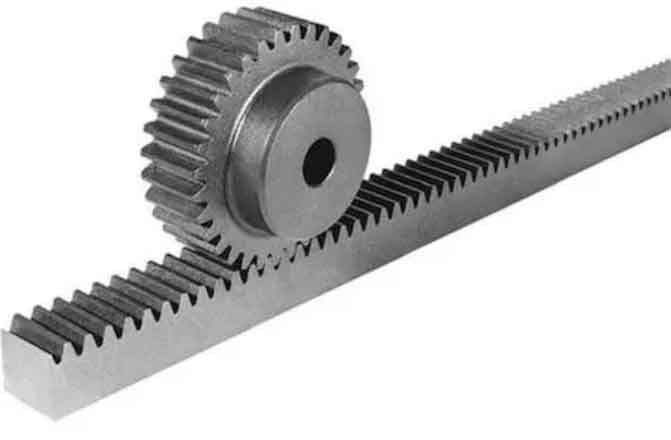
Noise reduction is an important consideration in rack and pinion gear applications, as it contributes to smoother operation and a more pleasant working environment. Here are some techniques commonly employed to minimize noise in rack and pinion gear systems:
- Tooth Profile Optimization: The tooth profile of the rack and pinion gear can be optimized to reduce noise generation. Using tooth profiles with modified shapes, such as a modified involute profile or tooth crowning, helps ensure a gradual engagement of the teeth, reducing impact and noise during meshing.
- Proper Lubrication: Adequate lubrication is crucial for noise reduction in rack and pinion gear systems. Lubricants help minimize friction and wear between the contacting surfaces, reducing noise generated from metal-to-metal contact. Choosing the right lubricant and ensuring proper lubrication intervals are essential for optimal noise reduction.
- Tooth Surface Finishing: Smoother tooth surfaces contribute to reduced noise levels. Finishing techniques such as grinding, honing, or polishing can be employed to improve the surface finish of the teeth. Smoother surfaces result in better tooth contact and reduced friction, leading to lower noise levels.
- Tooth Contact Optimization: Ensuring proper tooth contact is critical for noise reduction. Precise alignment and proper meshing of the rack and pinion gear teeth help distribute the load evenly, reducing noise generated from localized stress and wear. Maintaining proper tooth contact also minimizes backlash, which can contribute to noise during direction changes.
- Damping Mechanisms: The use of damping mechanisms can help absorb and dissipate vibrations and noise in rack and pinion gear systems. This can include the addition of elastomeric or polymeric materials in strategic locations, such as between the rack and housing or within the gear teeth, to dampen vibrations and reduce noise transmission.
- Rigidity Enhancement: Increasing the rigidity of the system can help reduce noise by minimizing deflection and vibration. Stiffer materials or reinforcements in critical areas, such as the rack or supporting structures, can enhance the overall system rigidity, reducing noise caused by flexing or resonance.
- Enclosure and Insulation: Enclosing the rack and pinion gear system within a protective housing or using sound-absorbing materials can help contain noise and prevent its propagation. Adding insulation or damping materials within the housing can further attenuate noise transmission and improve the acoustic environment.
It’s worth noting that noise reduction measures should be implemented in consideration of the specific application requirements and operating conditions. Different techniques may be more suitable for certain applications or environments. Proper maintenance, including regular inspections, lubrication, and gear alignment checks, is also essential to maintain noise reduction benefits over time.
